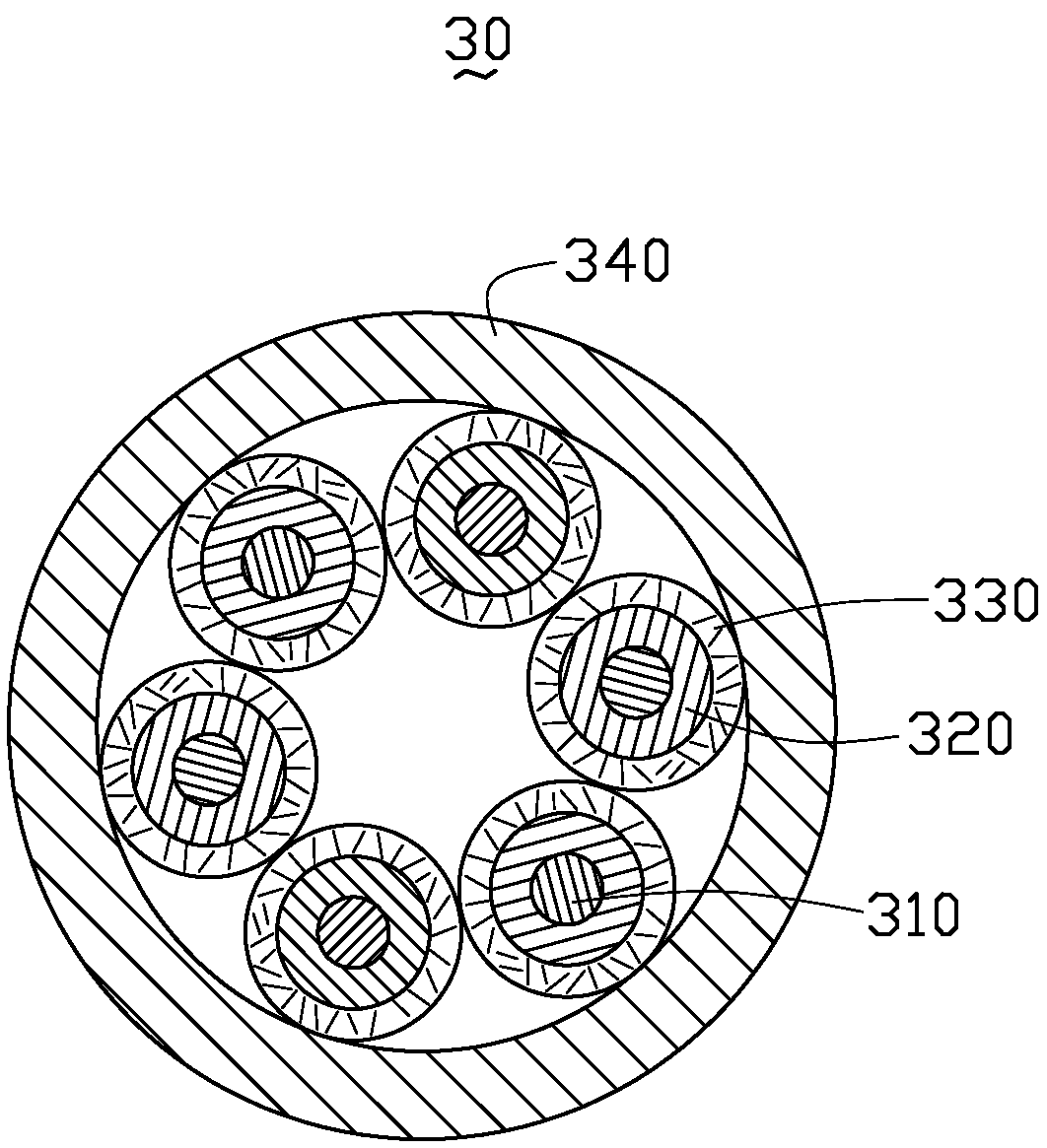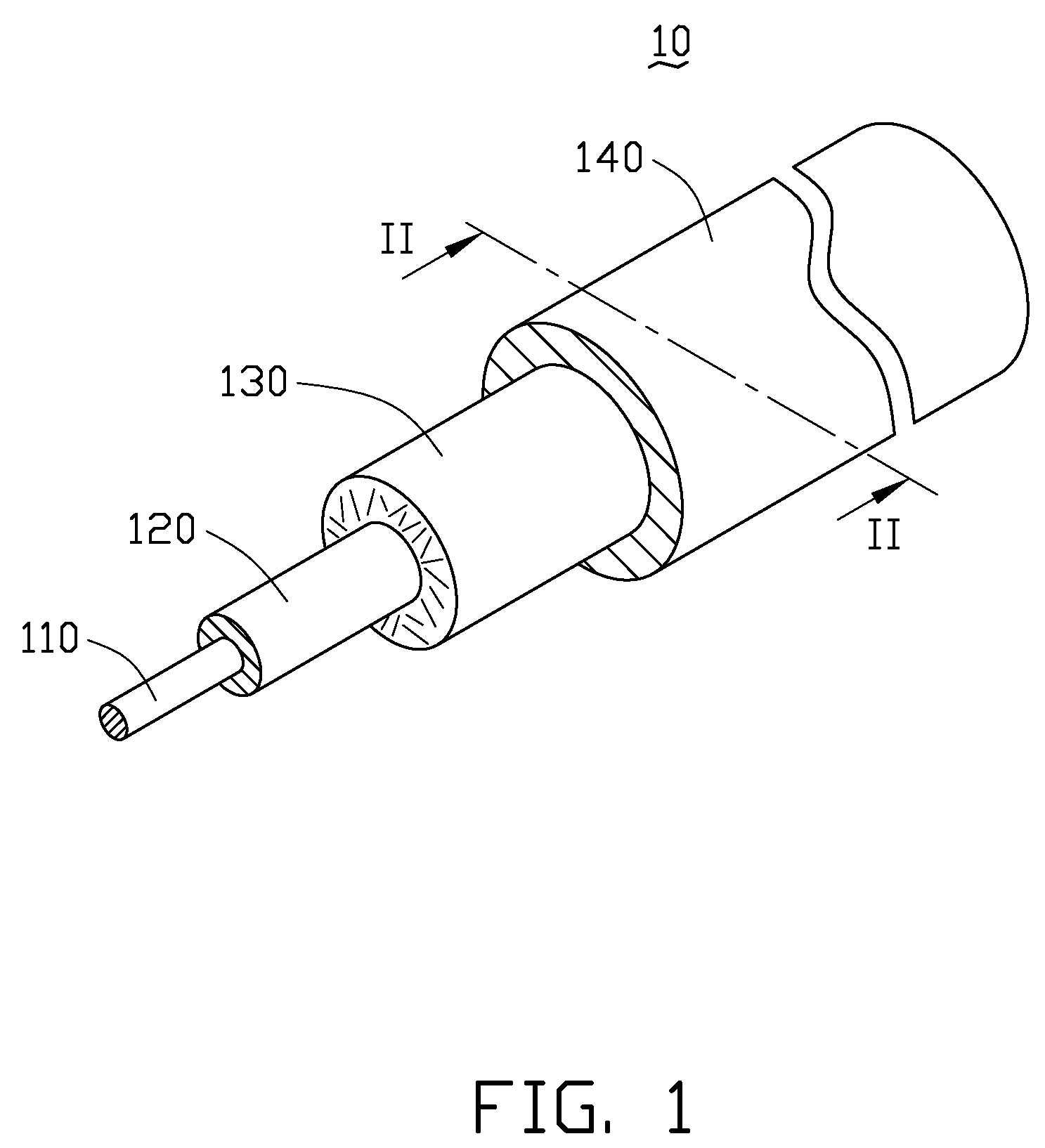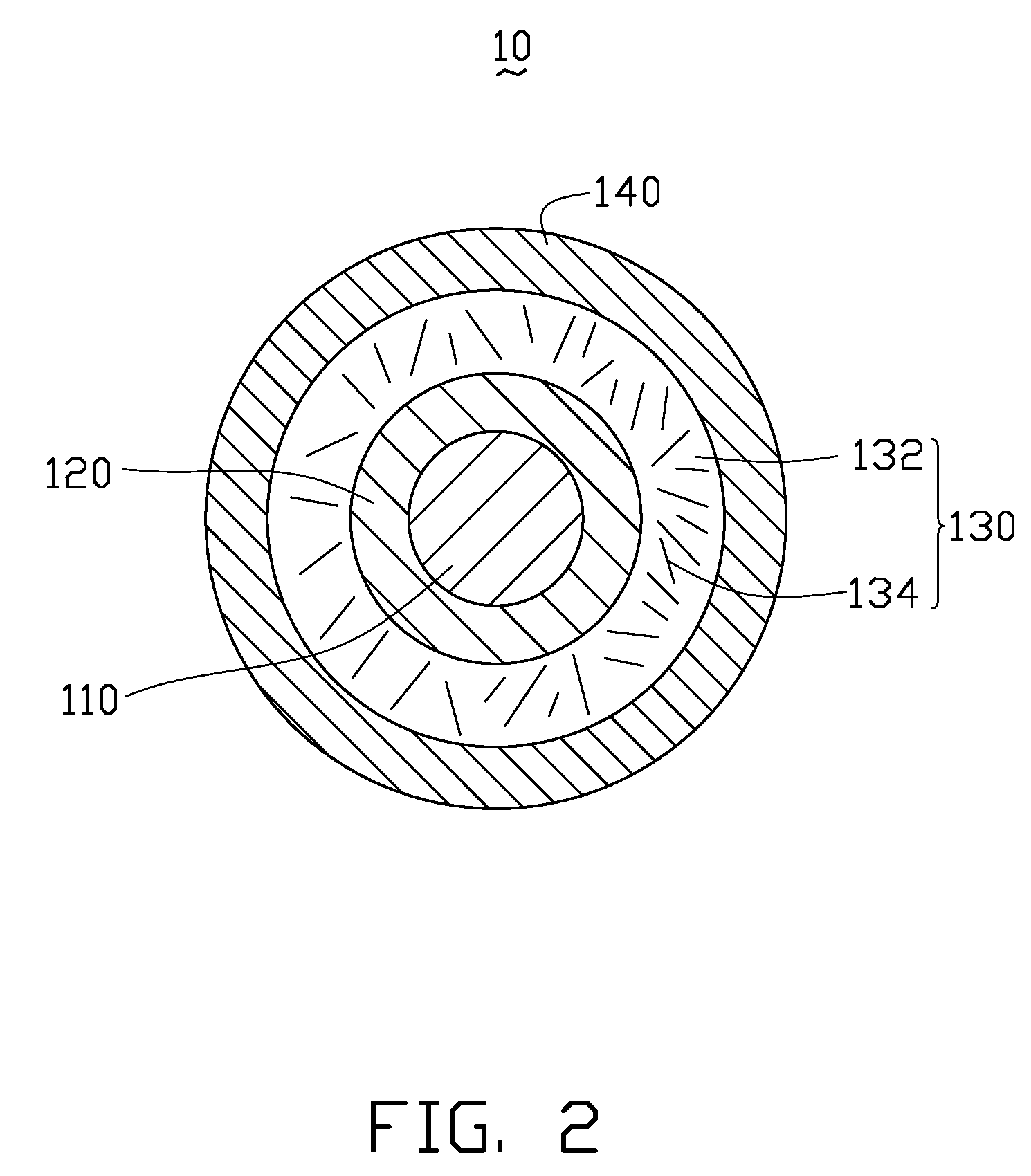Composite coaxial cable employing carbon nanotubes therein
a carbon nanotube and coaxial cable technology, applied in the field of coaxial cables, can solve the problems of low yield and high cost of conventional coaxial cables, and achieve the effect of great shielding effectiveness and suitable for low-cost mass production
- Summary
- Abstract
- Description
- Claims
- Application Information
AI Technical Summary
Benefits of technology
Problems solved by technology
Method used
Image
Examples
Embodiment Construction
[0018]The present coaxial cable is further described below with reference to the drawings.
[0019]The present coaxial cable includes at least one conducting wire, at least one insulating layer, each insulating layer respectively surrounding a corresponding conducting wire, at least one shielding layer encompassing the at least one insulating layer, and a sheath wrapping the above-mentioned three parts thereof. The coaxial cable is, usefully, an electromagnetic interference (EMI) shield cable.
[0020]Referring to FIG. 1, a coaxial cable 10, according to the first embodiment, is shown. The coaxial cable 10 includes a conducting wire 110, an insulating layer 120, a shielding layer 130 and a sheath 140. The axis of the conducting wire 110, the insulating layer 120, the shielding layer 130, and the sheath 140 is consistent (i.e., such elements are coaxial), and the arrangement thereof is, in turn, from center to outer.
[0021]The conducting wire 110 can be a single wire or a number of stranded...
PUM
 Login to View More
Login to View More Abstract
Description
Claims
Application Information
 Login to View More
Login to View More - R&D
- Intellectual Property
- Life Sciences
- Materials
- Tech Scout
- Unparalleled Data Quality
- Higher Quality Content
- 60% Fewer Hallucinations
Browse by: Latest US Patents, China's latest patents, Technical Efficacy Thesaurus, Application Domain, Technology Topic, Popular Technical Reports.
© 2025 PatSnap. All rights reserved.Legal|Privacy policy|Modern Slavery Act Transparency Statement|Sitemap|About US| Contact US: help@patsnap.com



